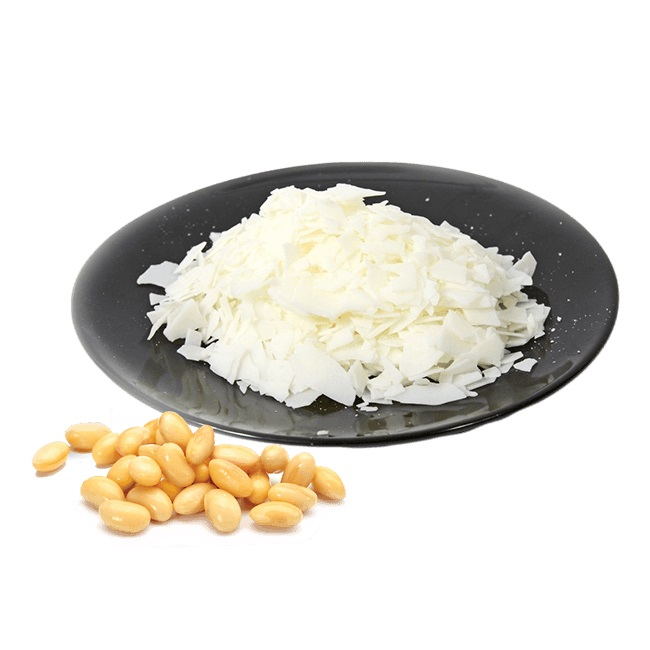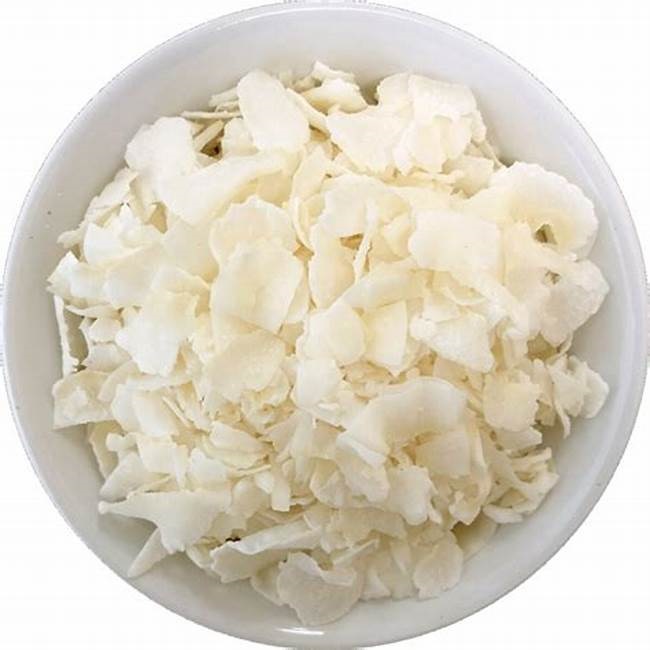We unleash your business potential by maximize the business innovation.
Send EmailSoy Wax, Soybean Wax, Vegetable Soy Wax, Natural Soy Wax, Hydrogenated Soybean Oil, 8016-70-4
🌿 Nature Soy Wax (CAS No. 8016-70-4)
🔹 Chemical Identity
-
INCI Name: Hydrogenated Soybean Oil
-
CAS Number: 8016-70-4
-
Source: Derived from soybean oil through hydrogenation
-
EINECS: 232-410-2
🏷️ Common Aliases & Trade Names
| Alias / Trade Name | Context / Usage |
|---|---|
| Soy Wax | Most common commercial name |
| Soybean Wax | Highlights botanical origin |
| Natural Soy Wax | Used in eco-friendly and sustainable branding |
| Vegetable Soy Wax | Emphasizes plant-based source |
| Hydrogenated Soybean Oil | INCI name; used in cosmetics and TDS |
| Glycine Soja | Botanical reference; appears in INCI listings |
| Soya Wax / Soya Mumu | Turkish equivalents seen in bilingual catalogs |
🧪 Physical Forms (Non-ERP, Informational Only)
-
Flakes
-
Granules / Pellets
-
Blocks
-
Blends (with other waxes)
-
Shredded / Grated form
⚙️ Typical Applications
-
Candle manufacturing (especially scented and decorative types)
-
Cosmetics (lip balms, creams, emulsions)
-
Soap and detergent formulations
-
Natural coatings and polish bases
Soya wax, also known as soy wax or soybean wax, is a natural and eco-friendly wax derived from soybean oil. It is commonly used in candle making due to its clean-burning properties and ability to hold fragrance well. Here are some key points about soya wax:
Properties and Benefits
-
Natural and Renewable: Soya wax is made from soybeans, a renewable resource, making it an environmentally friendly option.
-
Clean Burning: Soya wax burns cleaner than paraffin wax, producing less soot and smoke.
-
Longer Burn Time: Soya wax candles tend to have a longer burn time compared to paraffin candles.
-
Excellent Fragrance Holding: Soya wax has a good scent throw, meaning it can hold and release fragrance effectively.
Uses
-
Candle Making: Soya wax is widely used in the production of candles, including container candles, pillar candles, and votives.
-
Cosmetics: It is also used in cosmetic products such as lip balms and lotions due to its moisturizing properties.
Soya wax, also known as soy wax, has several other names and synonyms. Here are some of them:
-
Soybean Wax
-
Vegetable Soy Wax
-
Natural Soy Wax
-
Hydrogenated Soybean Oil
-
Soy Wax Flakes
-
Soy Wax Block
-
Soy Wax Pellets
-
Soy Wax Rende
-
Soy Wax Pul
-
Soybean Oil, Hydrogenated
-
The CAS number for soy wax, also known as hydrogenated soybean oil, is 8016-70-4
These names refer to the same product, which is derived from soybean oil and used primarily in candle making and cosmetics
| CAS Number | 8016-70-4 |
| Chem/IUPAC Name: | Soybean oil, hydrogenated |
| EINECS/ELINCS No: | 232-410-2 |
Soya wax, also known as soy wax, is a natural wax derived from the oil of soybeans. It is commonly used in candle making due to its clean-burning properties and environmental benefits. Here are some key points about soya wax:
Key Benefits:
-
Eco-Friendly: Soya wax is biodegradable and a renewable resource, making it an environmentally friendly option.
-
Clean Burning: It burns cleaner than paraffin wax, producing less soot and smoke.
-
Longer Burn Time: Soya wax candles tend to burn longer than those made from paraffin wax.
-
Better Scent Throw: It holds fragrance well, providing a strong and pleasant scent when burned.
Uses:
-
Candle Making: Soya wax is widely used in the production of candles, including container candles, pillar candles, and votives.
-
Cosmetics: It can be used in lip balms, lotions, and other skincare products due to its moisturizing properties.
Physical Properties:
-
Color: Typically white or off-white
-
Texture: Smooth and creamy
-
Melting Point: Around 49-82°C (120-180°F), depending on the blend
Hydrogenated Soybean Oil is a common cosmetic ingredient derived from soybeans. It is created through a process called hydrogenation, where unsaturated fats in soybean oil are converted into saturated fats, resulting in a more solid and stable form. In cosmetics, it acts as an emollient and texture enhancer, imparting a smooth and velvety feel to products like creams, lotions, and lip balms. Hydrogenated Soybean Oil appears as a creamy, off-white substance with a waxy texture. It helps products glide smoothly on the skin and provides a protective barrier to prevent moisture loss. The chemical formula of Hydrogenated Soybean Oil is typically C57H106O6.
🧪 Wax Product Suitability by Application Area
| Product Name | 🧱 Plastic | 🧩 PVC | 🍳 Frying Oil | 🧯 Mold Release | 🧴 Cosmetics | 🕯️ Candle | 🧼 Detergent | 📦 Packaging | ✨ Polish |
|---|---|---|---|---|---|---|---|---|---|
| Carnauba Wax | ✅ | ⚠️ | ✅ | ✅ | ✅ | ✅ | ⚠️ | ✅ | ✅ |
| Fully Refined Paraffin Wax | ✅ | ✅ | ⚠️ | ✅ | ⚠️ | ✅ | ⚠️ | ✅ | ✅ |
| Coconut Wax ✅ | ⚠️ | ❌ | ✅ | ⚠️ | ✅ | ✅ | ❌ | ⚠️ | ⚠️ |
| Stearic Acid 1865 | ✅ | ✅ | ❌ | ✅ | ✅ | ⚠️ | ✅ | ⚠️ | ❌ |
| Polyethylene Wax | ✅ | ✅ | ❌ | ✅ | ⚠️ | ✅ | ⚠️ | ✅ | ✅ |
| Liquid Paraffin | ⚠️ | ❌ | ✅ | ⚠️ | ✅ | ❌ | ✅ | ⚠️ | ❌ |
| Semi Refined Paraffin Wax | ✅ | ✅ | ⚠️ | ✅ | ⚠️ | ✅ | ⚠️ | ✅ | ✅ |
| Palm Wax ✅ | ⚠️ | ❌ | ✅ | ⚠️ | ✅ | ✅ | ❌ | ⚠️ | ⚠️ |
| Nature Soy Wax ✅ | ⚠️ | ❌ | ✅ | ⚠️ | ✅ | ✅ | ⚠️ | ✅ | ✅ |
| Rice Bran Wax | ✅ | ⚠️ | ✅ | ✅ | ✅ | ✅ | ⚠️ | ✅ | ✅ |
| Natural Bee Wax Pellet | ⚠️ | ❌ | ✅ | ⚠️ | ✅ | ✅ | ⚠️ | ✅ | ✅ |
| Microcrystalline Wax | ✅ | ✅ | ⚠️ | ✅ | ⚠️ | ✅ | ⚠️ | ✅ | ✅ |
| Slack Wax | ✅ | ✅ | ❌ | ✅ | ❌ | ✅ | ❌ | ✅ | ⚠️ |
| Candelilla Wax | ✅ | ⚠️ | ✅ | ✅ | ✅ | ✅ | ⚠️ | ✅ | ✅ |

